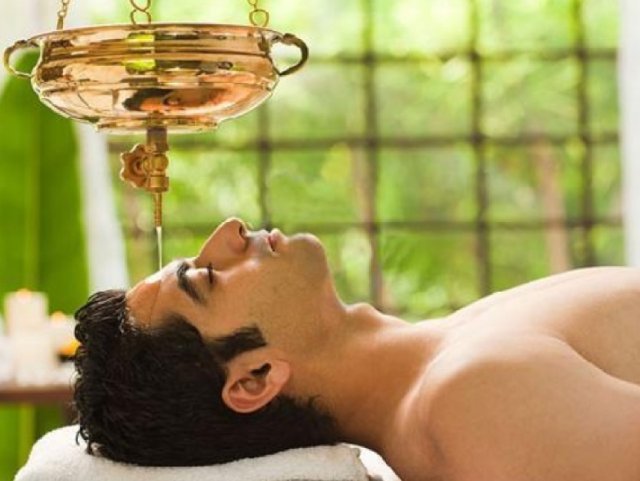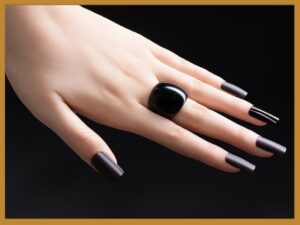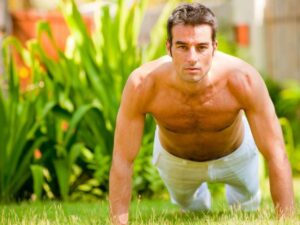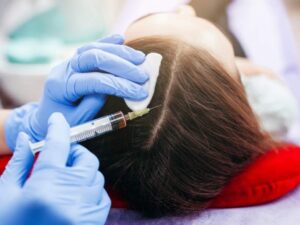“Ayurveda” in Sanskrit means knowledge of life. Ayurvedic Dermatology relies on the knowledge of individual body constitution to formulate the right skin care and lifestyle modifications, which can help one achieve complete harmony of the mind, body and skin. Read on to learn more.
Several botanical extracts which have been used since centuries across Asia and the Middle-East are now being re-examined by pharmaceutical companies and cosmetic giants. From the low budget cold creams purchased by penny-pinching housewives.. To the uber expensive and ultra-luxurious cosmetic creams and toiletries available only in select beauty stores.. You will be hard-pressed to find a formulation which does not contain at least ONE plant, animal, food, herb or natural mineral based ingredient. More and more women tend to shun chemical based cosmetics and are looking for herbal, natural and synthetic free formulations.
Women in Asia have always known about the beauty benefits of turmeric, cream, saffron, coconut oil and sandalwood paste. Meanwhile, women in Egypt and the Middle East have used henna, rose water, honey and fuller’s earth to beautify themselves. But now even science backed with multiple researches done across the world have confirmed what we already know. Governments, doctors, researchers and pharmaceutical companies are working together to integrate the ancient knowledge of alternative medicine with modern biomedicine in order to maximize benefit to the customer.
From the Ayurvedic perspective, there are three Doshas – psychophysiological subprinciples- that regulate skin health and perspective.Ayurveda asserts that we are all born into an unchanging constitution, which is our Dosha. These are the Vata, Pitta and Kapha. Vata governs circulation in the skin and modulates the sense of touch. Pitta controls skin temperature and the biochemical processes that occur in the skin. Kapha modulates moisture levels and lubrication. A person is characterised by the proportion of doshas present in his body. An imbalance of one, two or all three doshas causes disease.
People with Vata skin type are “The Dry Skin Type”. Their skin is dry, rough and thin, with visible veins. Their body craves sunlight and they tan easily. They have dry, rough and thin hair. Warm oily food with a mix of sweet sour and salty tastes balances vata. Vata individuals need to avoid dry food like bread and crackers, drink 6-8 glasses of warm water and sip sweet fruit juices throughout the day. Going to bed early and performing a full body oil massage before shower soothes vata.
People with Pitta skin type are “The Sensitive Allergy Prone Type”. Their skin is thick oily and smooth. They have excessive body heat, perspire profusely and flush easily. Their skin is warm and soft. They have multiple freckles and moles, get sunburnt easily, and develop acne, rashes and bruises very easily. They have strong, thick, oily and dark hair. These individuals must avoid excessive sunlight, steam and saunas, and facials. Hot and spicy food should be avoided. Astringent, bitter and sweet foods like melons and pears, citrusy fruits and vegetables, and cooked greens are especially good. Drinking plenty of water flushes out impurities from the allergy prone pitta skin. They must avoid scrubs and hair colouring. They must reduce external or internal contact with synthetic chemicals. Rose water, cucumber, watermelon, aloe vera, sunscreens and other cooling therapies, taken internally or applied to the skin, has a good impact on the health of Pitta individuals.
People with Kapha skin type are “The Oily Skin Type”. Their skin is thick, smooth and moist, fair and clear complexioned and with few wrinkles. They are prone to acne, open pores, blackheads and whiteheads, and premature graying. They need more cleansing than other skin types. They must avoid oily creams. They must also avoid sugary, starchy and fatty food along with cheeses. Light, easy to digest, astringent, bitter and well-spiced food (Indian curries, for example) help in balancing your kapha. Food must be prepared in olive oil and a little ginger and lime can be taken before meals to stimulate the digestive system. Frequent warm baths, regular exercise, high fiber diet and scrubbing the skin with an exfoliating clay, can help purify Kapha body types.
So how do some of our favourite domestic skin care ingredients work?
Turmeric has antiseptic properties and is an excellent exfoliant. Raw organic turmeric is almost 100% safe. It has been used to lighten a tan and heal acne. It has also been used to peel off facial hair, treat burns and skin infections. Because of its yellow stain, it is best suited for brown-skinned individuals. When used as a spice, it has anti-oxidant and anti-cancer properties. It can fight asthma, allergies and arthritis, lower blood sugar levels and detoxify the liver. No wonder this humble spice has been referred to as “the Indian Saffron”.
Oats are a kind of cereal and well regarded as a nutritional powerhouse. Its beauty benefits have been known since 2000 BC when Egyptians and Arabs used it to scrub away dead skin and beautify their bodies. Oatmeal baths are hugely beneficial for anyone suffering from Eczema, itching or insect bite allergies. It contains polysaccharides, which turns gelatinous in water and forms a film over the skin, thus acting as a natural moisturizer.
Henna is an integral part of Indian and Middle-Eastern culture. It is a flowering herb which imparts a natural orange-red stain when the leaves are dried and powdered, or crushed, to form a paste. Henna helps to strengthen and condition hair, prevent premature graying and protect against split ends when applied as a mask on scalp hair. Henna also has antibacterial and antifungal properties. Royal families in Persia used henna powder as a body scrub as well. Henna oil soothes headaches, cools the scalp, delays graying of hair and cures insomnia as well. Natural henna is 100% safe. But black henna can cause skin irritation and allergies. This is not because of the henna per se, but the dye added to impart the black color. Hence, there is no such thing as “natural black henna”. Henna leaves, flowers and the bark of henna plant have been used for its medicinal properties as well.
Do natural metals and minerals have beauty benefits too? The ions in gold can help stimulate the skin. This helps in reducing fine lines and tightening the skin. Gold has skin lightening benefits as well. A gold based facial improves blood circulation, lightens and tightens skin and gives an instant glow. Gold taken orally can treat allergies and inflammatory disorders as well. Ancient Romans, Egyptians and Chinese have known about the beauty benefits & healing properties of gold for centuries now. It is said the Cleopatra used a gold mask on her face every night!
Rose water is a rich source of antioxidants, and has several anti-inflammatory, anti-microbial and hydrating properties. It is highly versatile and suitable for all skin types and all age groups. It can be used as a toner for oily and pimple-prone skin. It can be used to soothe sun burns and sensitive skin. It can be mixed with glycerine or olive oil and applied to dry and chapped skin. You can use it to remove make up or add it to your face pack. It has an unforgettably pleasing aroma which can calm the nerves, relieve anxiety and refresh the senses. So a few drops added to your bath water can help you forget the day’s burdens.
Honey, aloe vera, sandalwood powder, saffron, caffeine, coconut oil, avocado, soy, tea tree, arnica, clay, mushrooms, olive oil, chamomile, lavender, rosemary, neem and licorice.. The list is endless.. From skin lightening to moisturizing, healing, soothing, anti-itch and antiseptic properties.. These botanicals are a precious treasure of beauty and anti-ageing secrets. Animal extracts like emu oil, snake oil, placenta extracts, caviar and bird feces have also been used in various anti-ageing creams and facials with great success.
On a parting note, let me leave you with a tip that you can actually use! Have you been trying to concoct an inexpensive home-made face pack of your own, but don’t know how to go about it? Here is how – You can use gram flour, oatmental or sandalwood powder as a base. To this you can add ground almonds (blanched and peeled), dried orange peel powder and just a pinch of turmeric. The ground almonds will act as a scrub, the orange peel has a chemical peel like effect and the turmeric will help dry out acne. You need to add a liquid base to turn this powder into a face pack. Add rose water if you have oily skin. Or milk cream for normal to dry skin. You also need to add some kind of oil for the right consistency, so try olive oil or sweet almond oil. This is an excellent face pack for anyone over 25. For teen skin, you can make a fruit based face pack. Use the pulp from tomatoes, strawberries and pineapples, add a pinch of saffron to it. Leave it on your face till it dries, then rinse. This is the perfect summer face pack for tanned and oily skin as well.




